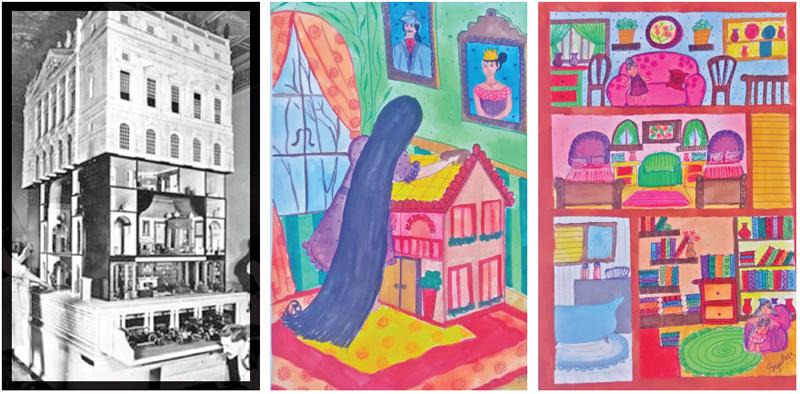
Doll’s houses are toys made in miniature. First built in the 17th century in northern Europe, mainly in Germany, Holland, and England. Doll’s houses were originally intended for children to play with but collecting and creating them has become a popular hobby for many adults since the early twentieth century.
Early doll’s houses were all handmade, but now with inventions and developed technology, they are mostly machine-made. Modern doll’s houses are amazing, beautiful, and unique
They are mini architectural structures done with different materials, along with mini furniture. You can find very expensive and elegant old handmade doll’s houses that belong to the early 17th and 20th centuries in museums right now.
History of doll’s houses
In the 16th century, mostly in European countries, glass doll houses were unique, fancy items. 
They were complete structures consisting of cabinet display cases, extremely detailed both in the exterior and interior, with elegant furniture and accessories. Utensils in the kitchens, beds and mini bedsheets, pillows, and cupboards all handmade and very detailed.
Even the lights have been crafted by hand. But these doll’s houses are off-limits to children because they are for adults, and are very expensive and can only be afforded by wealthy families. These cabinet doll houses with detailed furniture are also found amongsome fewer wealthy families but it’s rare.
These exquisitely crafted doll’s houses are used as gifts, especially for princesses in the early days.
The first recorded doll’s house was made between 1557 and 1558 for Albrecht V, Duke of Bavaria.
Small doll’shouses like the Tate House appeared in the 18th century.
Construction of doll’s houses
British doll’s houses in the 16th and 17th centuries are more likely to have a hinged front that opens to reveal the rooms. While in the United States, doll’s houses have an open back and a fancy front. Most are made from glass and wood.
Doll’s houses which have been made in the 20th century for children are machine made in various materials like plastic, wood, and metal. Furniture, too, is most likely to be made from plastic.
Today, you can find mini house construction kits and also full-sized doll houses, which are made from fibre boards or ply wood.
Creating and collecting doll houses as a hobby
Doll’s house collectors can be seen in both wealthy and rarely in average income families. Some people like to make their own doll houses and collect or sell them. They find it interesting and fun to make them, especially the mini furnitureand love to spend time detailing each and every place.
You can find accessories like books, pillows, beds, lamps, kitchen utensils, and mini-artworks, cupboards with drawers, tables, and chairs that arehandmade, machine made, or created using DIY kits.
Queen Mary’s doll’s house
This doll’s house was created for Queen Mary (Consort of King George V of England) between 1921 -1924 by Sir Edwin Lutyens, who was a leading architect. Queen Mary’s doll’s house contains 16 rooms and required four years to build. It has working lights and is filled with miniature luxury items and many modern accessories of that period, which are exqusitely crafted.
Siyathee Ekanayake.
Grade 9
Vidura College
Colombo
